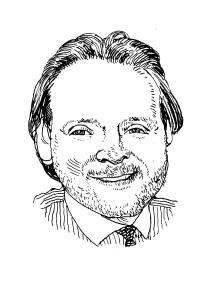 In 1977, baseball slugger Reggie Jackson responded to a question about his importance to the New York Yankees by saying that he was “the straw that stirred the drink.” Similarly, the Manhattan building sales market is the straw that stirs the New York City building sales market, and we have been seeing many positive signs in the market of late. Just as Mr. October led my beloved Yankees to back-to-back championships in 1977 and 1978 after a 15-year drought, Manhattan is poised to lead the New York City market out of its malaise.
In 1977, baseball slugger Reggie Jackson responded to a question about his importance to the New York Yankees by saying that he was “the straw that stirred the drink.” Similarly, the Manhattan building sales market is the straw that stirs the New York City building sales market, and we have been seeing many positive signs in the market of late. Just as Mr. October led my beloved Yankees to back-to-back championships in 1977 and 1978 after a 15-year drought, Manhattan is poised to lead the New York City market out of its malaise.
At face value, the Manhattan numbers in first-quarter 2010 (1Q10) wouldn’t excite anyone, as they seem to be relatively flat from the first quarter of 2009. However, upon deeper inspection, we see positive trends emerging.
In 1Q10, there were $1.539 billion in investment sales transactions closed in Manhattan (defined as south of 96th street on the East Side and south of 110th Street on the West Side). This level is almost unchanged from the $1.536 billion in sale transactions closed in 1Q09. This figure, however, represents an increase of 51 percent from the $1.019 billion in sales in 4Q09.
If we annualize the $1.539 billion in sales in 1Q10, the marketplace is on pace for approximately $6.16 billion in sales volume this year. If that occurred, it would represent a 47 percent increase in activity from the $4.2 billion total in 2009. This significant increase would be due to the fact that 1Q10 activity significantly exceeded sale volume in 2Q09, 3Q09 and 4Q09, so the traditional comparison, of quarter to quarter, shows its flaws.
Sales activity, expressed in terms of aggregate dollar volume, can be a misleading indicator of true market activity because several large transactions can greatly impact these totals. For example, the $5.4 billion sale of Stuyvesant Town-Peter Cooper Village exceeded, in one transaction, the entire $4.2 billion in sales in 2009 by a significant margin. In 1Q10, the top six transactions represented nearly half (48 percent) of the total dollar volume of sales activity in the quarter. Because of this lopsided dynamic, we focus greater attention on the total number of buildings sold than we do on the aggregate dollar volume.
IN MANHATTAN IN 1Q10, there were 99 properties sold. This represented a 98 percent increase above the 50 properties sold in 1Q09. To give some perspective to this activity level, we should take a look at how the volume of sales, in terms of the number of buildings sold, has performed over the long term.
In the Manhattan marketplace, there are 27,649 buildings in our statistical sample. Over a 26-year history, the average turnover within this stock has been 2.6 percent annually. The lowest volume of sales we ever saw occurred in 1992 and 2003, both of which were years at the end of recessionary periods and were also both years in which New York City hit peaks in cyclical unemployment. (Click on the slideshow nearby for a chart that shows the 26-year history of building sales volume since 1984.)
We had always assumed that the 1.6 percent turnover was a base line below which volume would never fall. This assumption was based on the fact that in 1992 and 2003, the only people who were selling were those who had no choice. Properties were sold due to death, divorce, taxes, insolvency, partnership disputes, etc. This assumption was obliterated in 2009, as there were only 322 properties sold in the entire Manhattan marketplace. These 322 sales represented a turnover of 1.17 percent, 27 percent below the 1.6 percent previous low.
Notwithstanding this new record low, there was some good news in the 2009 numbers, as throughout the year, on a quarter-over-quarter basis, we saw an increase in volume. (The chart nearby shows that if you annualize the sales that occurred in 1Q09, turnover runs at 0.7 percent.) If we annualize the 123 sales in the first half of last year, turnover rises to 0.9 percent. Annualizing the first three quarters of sales brought us to a turnover of 1 percent, and when we incorporate fourth-quarter sales, the annual volume rises to the 1.17 percent level. If we annualize the 99 sales in 1Q10, sales volume in Manhattan increases to 1.4 percent. This quarterly increase was the fifth consecutive such quarterly increase.
We anticipate turnover for 2010 to finish in the range of 1.6 to 1.7 percent, which would be an increase of 40 to 45 percent above 2009 levels. While still at previous historic lows, the 40 to 45 percent increase in activity would certainly be welcomed by participants in the marketplace.


